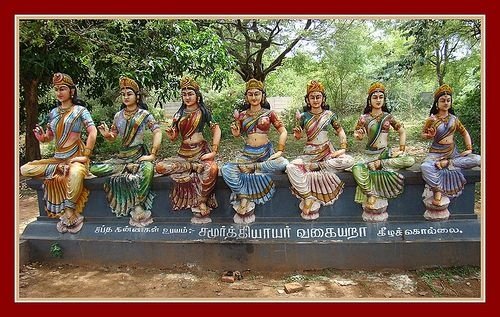In Hindu mythology, the Pleiades are often associated with the "Krittikas" – the Seven Mothers or Seven Wives of the Seven Rishis (sages). The Krittikas are closely tied to various myths and legends in the vast tapestry of Hindu stories.
In the earliest Vedic literature, the Krittikas are mentioned as a group of six stars, and their significance is primarily astronomical. With time, their number became seven, and they gained more mythological importance.
One of the most famous tales involving the Krittikas is the birth of Kartikeya, also known as Skanda or Murugan. According to legend, the fiery seed of Lord Shiva was too potent and was cast into the river Ganges. The Krittikas, passing by the river, took the form of the Pleiades and nursed the newborn Kartikeya. As a result, Kartikeya is sometimes referred to as "Kartikeya" after the Krittikas, and he possesses six heads, one for each of the Krittikas who nursed him.
In another legend, the Krittikas are depicted as the wives of the Seven Rishis, who are themselves associated with the prominent constellation of the Big Dipper. The Seven Rishis, or Saptarishi, are revered sages in Hindu traditions and are said to be the mind-born sons of Brahma, the creator. Their wives, the Krittikas, being associated with the Pleiades, further intertwine the Hindu pantheon with the cosmos.
From an ecofeminist perspective, the Krittikas, as nurturing figures, embody the principles of life-giving, sustenance, and care. The legend of them nursing Kartikeya places them in a motherly role, nurturing and fostering life. This aligns with the ecofeminist idea that celebrates the intrinsic connection between women and nature and the mutual nurturing relationship both share. The tale underscores the value of the feminine principle in preserving and nurturing life, much like nature itself.
The Krittikas, as represented in Hindu mythology, offer a rich tapestry of tales that intersect the divine, the astronomical, and the earthly. They stand as symbols of nurturing and motherhood, while also anchoring the vast cosmos to the tangible world through their association with the Pleiades. Through stories like these, the ancient Hindus illustrated the deep connection between the cosmos and life on Earth, emphasizing the interplay of the divine, the feminine, and the natural world.

